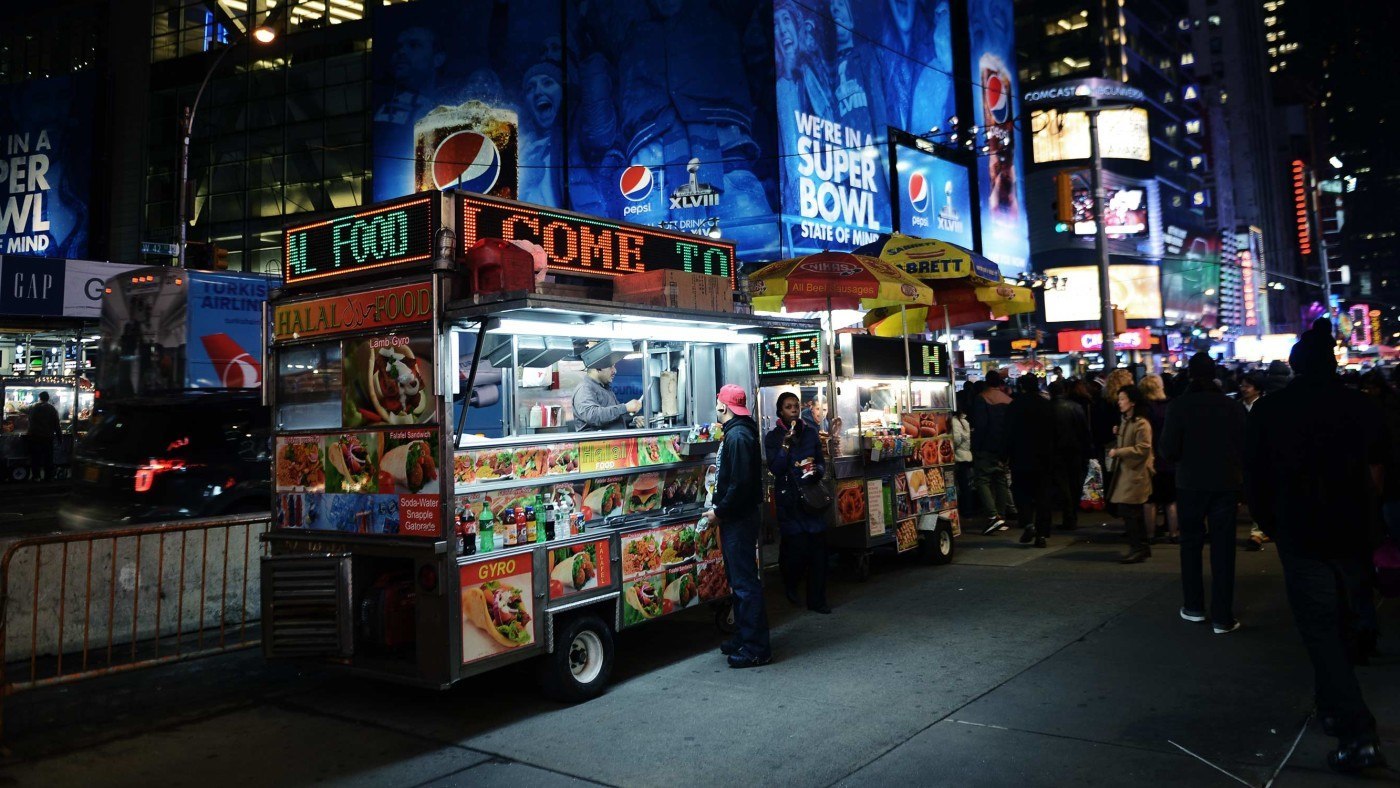UberEATS is delicious. You pull up the Uber app, choose among three to five menu options (usually between $8 and $12), and your meal is delivered within 10 minutes. Payment is through Uber, and there is no delivery fee. Service is rapidly expanding, and slow-to-catch-up regulators have yet to devise a way to stymie its growth.
In stark contrast to UberEATS and other on-demand food delivery services, burdensome restrictions on another way to get lunch—street vendors—are common across the nation. Chicago does not allow food trucks to operate within 200 feet of any brick-and-mortar eatery. Miami only allows roaming vendors, as they are prohibited from staying in one place any longer than it takes to make a sale. Los Angeles completely bans sidewalk vending. New York City has an arbitrary cap of 3,100 on year-round food vendor permits, creating a costly secondary market that puts this line of work out of reach for average New Yorkers as the supply of city approvals fails to meet vendor demand.
Though street vending has always been a staple of American cities, its regulations are receiving more attention because the quality and number of food trucks has increased dramatically over the past few years. Even famed world traveler and chef Anthony Bourdain plans to open a market of 100 food vendors in New York City in 2017. To provide some data on this trend, a recent Institute for Justice report shows who street vendors are and how they contribute to the economy of the 50 largest U.S. cities.
The main reasons why city street vendors (78 percent of whom sell food) face opposition is that more dining options means increased competition for brick-and-mortar restaurants. Most office workers are accustomed to seeing long lines of people waiting to order at food trucks outside of their buildings. Indeed, 43 percent of street vendors operate in business districts, where other dining options are not as prevalent and are more expensive, due to high rental prices.
Some restaurant owners who choose to fight this change try to convince city government to place additional restrictions on street vendors. However, embracing mobile vending would be a smart move for restaurants who are struggling to stay competitive.
Not only do street vending and on-demand food services present opportunities for restaurants to reach more customers, they also provide ways to cut back on costs. Due to a combination of zoning laws, food service building requirements, limits on franchising, and labor regulations, brick-and-mortar restaurants face an uphill battle against their mobile, slim-staffed competitors.
Street vendors are not currently contractors for larger restaurants—94 percent of vendors own their business and the structure they use to sell goods. Though most vendors do not have any employees, the 39 percent that do employ an average of 2.3 full-time workers and 2.7 part-time workers. This light staff lowers costs, especially when the venue is mobile and customers seem to be willing to spend half of their lunch breaks waiting in line.
Restrictions on vendors harm low-income individuals, both those who want to work and those who want to eat. The average year-round, full-time vendor earns just $18,000 a year working around 60 hours a week. Street vending also offers opportunities for modest earnings and upward mobility for those with low levels of education. Nearly 3 in 10 vendors do not have a high school degree (compared with 18 percent of all workers in large U.S. cities). In a time where the unemployment rate for those without a high school degree remains at 6.9 percent and labor force participation is just 45.7 percent, additional work options are sorely needed.
Veterans make up a disproportionate level of street vendors. Whereas veterans are 6 percent of the workforce in large U.S. cities, 10 percent of vendors are veterans. And a third of street vendor veterans are disabled—double the rate of non-vendor veterans.
In addition to employment opportunities, street vending offers a chance at upward mobility. District Taco in the Washington, D.C. Metro Area started as a simple $25,000 hot dog cart in 2009, but the business is in the process of opening its ninth brick-and-mortar restaurant. The chain, started by immigrant entrepreneur Osiris Hoil, now employs over 300 local workers.
One positive sign is that the licensing burden for street vendors does not seem to be too onerous. The Institute for Justice found that 72 percent of vendors were able to open by securing the appropriate permit. The other 28 percent needed to complete an average of 5 months of training to open their shops.
Even though there is some justification to require a course in sanitation for certain food vendors, it should be noted that an evaluation of 260,000 food safety inspection reports in seven cities found that food vendors did as well or better in terms of compliance than did brick-and-mortar restaurants. They certainly outperform Chipotle. In an age where it takes an average of 12 months to get government certification to trim trees, 14 months to be allowed to work as a door repair contractor, and 18 months to become a government-certified security alarm instructor, the requirements street vendors face seem to be lighter than the licensing burdens for other occupations.
As the IJ report concluded, “For cities looking to expand economic opportunities, facilitate job growth and realize greater tax revenue, welcoming street vendors is a low-cost and potentially high-reward option.” Hungry consumers are fortunate that entrepreneurs are always able to find ways to outmaneuver regulators and provide lunch through innovations such as UberEATS.


